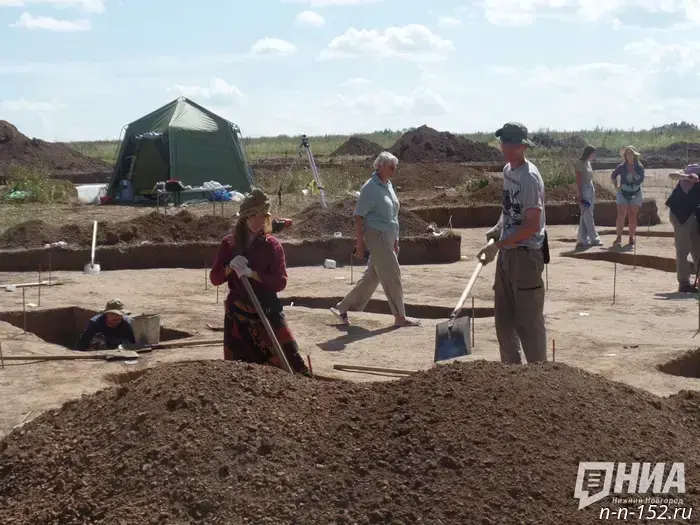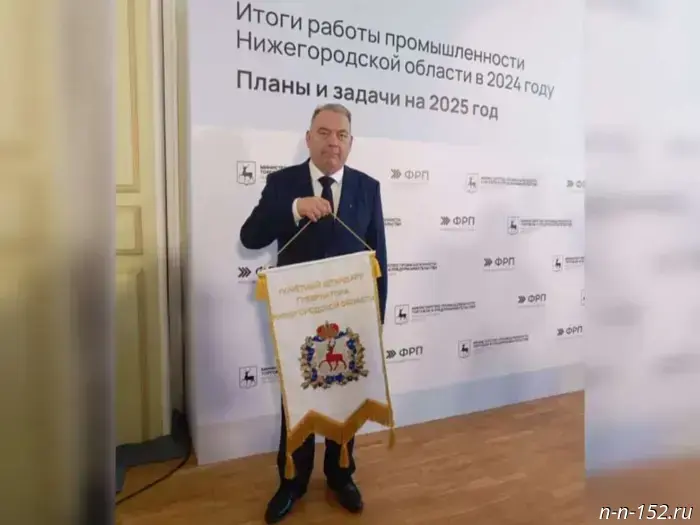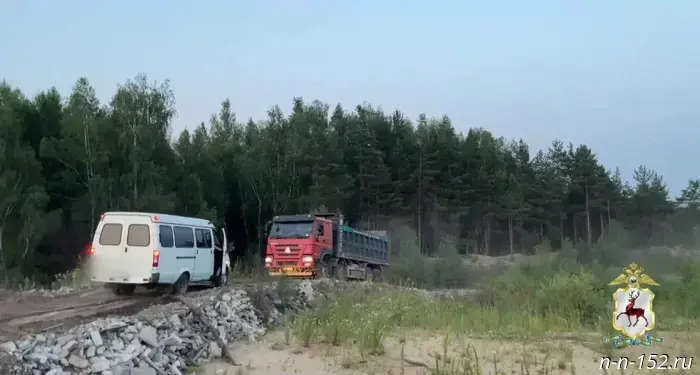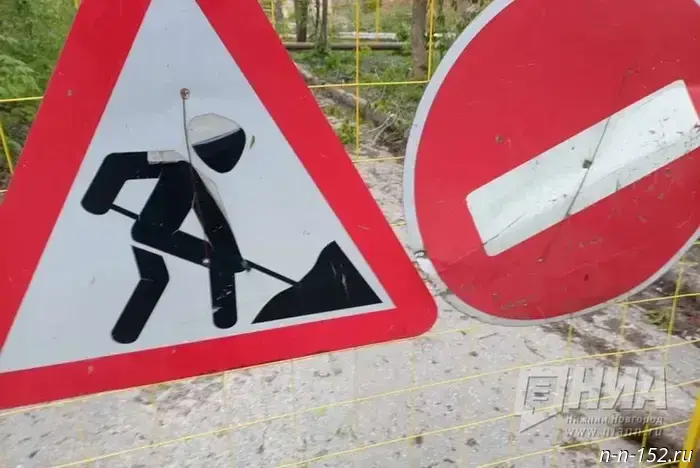
The Vanished People: Archaeologists Continue to Uncover the Secrets of Murama on the Land of Nizhny Novgorod
NIAN "Nizhny Novgorod" - Maria Orlova
Archaeological excavations of the Murom burial site in Vachsky District, Nizhny Novgorod Region, are in their third year. They will allow scientists to obtain new information about the little-known Finno-Ugric tribe of Murom, which inhabited the region in the 9th–11th centuries. A correspondent from NIAN "Nizhny Novgorod" visited the site of the expedition.
Who were the Muromans and why is there so little known about them?
Anastasia Shvetsova, head of the archaeology sector of the Fund Department at the Nizhny Novgorod Museum-Reserva, noted that some Finno-Ugric peoples, such as the Mari and Mordva, have survived to the present day, while others—like Murom, Merya, and Meshchera—have been assimilated and disappeared as independent ethnic groups.
"Extremely little is known about Murom: literally a few mentions in written sources, such as the 'Tale of Bygone Years,' where, around 862 AD, peoples paying tribute to Rus' are listed. We know they had their own language, pagan beliefs, and a tribal center—the city of Murom. But behind these lines, the people themselves are not visible—how they lived, looked, or what they did," she explained.
Answers to these questions could be provided by archaeology. Excavations fill these gaps, allowing us to recreate the picture of life, everyday culture, and beliefs of vanished peoples.
The expedition is organized by the Nizhny Novgorod Museum-Reserve and the Institute of Archaeology of the Russian Academy of Sciences (RAS). Ethnographers from Glinka Nizhny Novgorod State Conservatory and the Shchelokovsky Khutor Museum also participate. They assist in studying folk traditions, myths, and rituals. Additionally, students from Lobachevsky University (Nizhny Novgorod) and Gaku (Moscow), undergoing archaeological practice, take part in the excavations.
Unique horse burials
The ancient Murom necropolis was discovered and protected by the state in 2022. In the previous two seasons, archaeologists examined about 600 square meters and uncovered 28 burials. This year, thanks to expanded work, 30 new graves from the 9th–11th centuries have already been found, including for the first time, unique horse burials with harness items dating to the 9th century.
Excavations at this site have not yet begun on this area. The burial sites are distinguished by their chalky color.
Experts emphasize that these are not accidental animal remains but targeted, ritual burials. Archaeologists note that each animal was placed in a separate pit, the horse was laid out in a special compact manner, and carefully covered with soil. This suggests a conscious and respectful attitude toward the animal.
Although there are no surviving written sources explaining this custom, scientists hypothesize that horses occupied an important place in Finno-Ugric culture and life. The found jewelry—bracelets with horse head images, bronze pendants in the shape of horses—confirm the significant role of these animals in Murom culture.
Discovered horse burial
Funerary rites and their mysteries
Researchers reported that the orientations of Murom cultural burial sites are characteristic: bodies were laid with heads to the north or northwest. They also recorded two types of burial rites: cremation and inhumation.
According to specialists, both rites are present at previously studied cemeteries, but burials with cremation are significantly rarer. In this season, two such cases were examined: one male cremation burial and another, more complex in structure, currently under analysis.
Fifteen graves are at different stages of excavation.
Scientists have not yet identified patterns linking the type of rite with gender, age, or social status of the deceased. Similarly, no connection with religion has been confirmed, as this is not evident archaeologically.
Burial depths vary as well. Shallow graves are presumed to be associated with winter burials, but no differences in inventory composition have been found.
From shovel to laboratory: the artifact’s journey
Work at the necropolis is conducted manually. Using shovels and specialized tools, archaeologists remove soil layer by layer. Anastasia Shvetsova explains that each grave is excavated in stages: first, one half of the burial is selected to make a vertical cut, which reveals how the grave was filled—whether there were any structures or if it was just a pit filled with earth. Then, work begins on the level of the finds—carefully cleaning the items. Only afterward is the second half of the grave excavated.
“Initially, we use shovels where possible, until we encounter artifacts. When we approach the finds, shovels are set aside, and we use trowels, brushes, and other delicate tools,” she said.
Samples of the excavated soil will also be sent to laboratories—where scientists will study, among other things, the plants that grew in this area hundreds of years ago. A significant achievement was obtaining the first anthropological materials from this site. Bones in these soils are poorly preserved, but they have survived only where in contact with metal, which acts as a preservative—improving bone preservation. Teeth and dental enamel are best preserved. The collected materials will be studied by specialists from the Institute of Archaeology of RAS. Their analysis will help reconstruct the appearance of the ancient inhabitants of the region.
Preserved skull bone tissue
An artifact that has yet to be extracted by archaeologists
A field laboratory is functioning at the excavation site, conducting initial conservation of finds. Scientists emphasize that their task is to ensure the safe transportation of artifacts to permanent laboratories, not restoration in the field. Here, surface contamination is removed if necessary, and fragile items are immediately packaged. They use a special method involving oxygen absorbers, creating an environment inside containers that closely resembles burial conditions, which is especially important for organic materials like textiles or wood, as they are highly sensitive to environmental changes.
Artifacts in the field laboratory
According to artist-restorer Konstantin Talov, this approach is unique and currently only applied in this expedition.
Black diggers: enemies of history
Olga Viktorovna Zelentsova, senior researcher at the Institute of Archaeology RAS and head of the Volga Archaeological Expedition, stressed the importance of rescuing as much information as possible before "black diggers"—metal detectorists who illegally damage archaeological sites in search of valuable items—do their destructive work. She reported that last year, half of the uncovered graves were damaged.
“They remove iron and beautiful items, leaving disturbed tombs where everything has been rummaged through. We lose not only objects but also the information associated with them,” Olga Viktorovna explained.
She emphasizes that, for archaeologists, the find itself is not enough—the context of how, where, and with what it was found is crucial. This allows conclusions about the beliefs, culture, and daily life of past peoples. When archaeologists come after black diggers and find only shards, without jewelry, tools, or weapons, it creates a picture of a impoverished and primitive "lapotnaya Rus’."
A grave with uneven edges was disturbed by "black diggers"
Yuri Vladimirovich Filippov, General Director of the Nizhny Novgorod Museum-Reserve, continued this thought with a vivid analogy:
“You have someone with no education, nothing, and a metal detector—digging into archaeology. Now, if that same person without education tried to help a nuclear physicist—‘Let me help with your nuclear reactor, I think it should be done this way’—the reactor would explode, and the city could be destroyed. Or, with secondary education and pretending to be a doctor, he reads an anatomy atlas, then enters the operating room: ‘Hey, let me do the surgery—I’ve read about it, I can do it’—but the person dies. The first case is a huge tragedy. The second is less so. But here, as Olga Viktorovna mentioned, they cause a tragedy that will have repercussions years later. Do you understand? Years later, this impoverished, looted settlement enters history textbooks. And what will children think? ‘Our ancestors—really just savages! And in the West, such a wealth of material culture!’ This setback unfolds over years,” he said.
Yuri Filippov shows where "black diggers" made pits to "ping" metal detection signals
For example, during excavations, an interesting ornate horse-headed pendant with bells was found. It is in perfect condition, a significant scientific discovery.
“This is, without exaggeration, a unique find. It helps us take steps toward understanding ancient cults. For example, the horse cult—we see horse burials, related artifacts. Such finds inspire hypotheses and give food for thought. Each object is like a page from a book. If you tear it out, understanding the full text is very difficult. That’s why it’s important to preserve artifacts in context, not rip them out of the ground for profit,” he explained.
Another example: last year, scientists discovered a Henri III dinar from the Holy Roman Empire and a dirham. These coins are not only interesting artifacts but also essential for dating.
“Thanks to the dinar, we established the upper boundary of the site's existence. This was a decisive argument in scientific debates. If black diggers had found and taken this coin, we would have lost critical information,” he said.
A replica of the coin found last year
He also emphasized the need to tighten penalties for such “looters” and to introduce a mandatory registration system for metal detectors.
Filippov said fieldwork is scheduled to end by the end of July. After that, all finds will be sent to laboratories for further research and restoration. The expedition results will be presented at an exhibition at the Nizhny Novgorod Museum-Reserve and will be an important contribution to regional history studies.
He noted that excavations will continue next year.
“A full understanding of this necropolis, I am confident, will take at least four years. Why? Because we won’t excavate it entirely this year—the remaining part of the territory will necessarily be left for the next season. So far, we’ve studied about half—around 1.5 to 2 thousand square meters. In my estimation, the total area of the site could reach 3.5–4 thousand square meters. Therefore, next year, we plan to complete the fieldwork,” he said.
It’s important to understand: comprehending such a monument requires a comprehensive approach. A huge amount of data—from archaeological to natural sciences—must be correlated. It can already be said that dissertations will be written based on the research results. But our main goal is to create a collective scientific monograph on this necropolis—with participation from the Institute of Archaeology—somewhere in three to four years, at least,” he concluded.
Why archaeologists appease the keremet
An unusual tradition has been followed during archaeological excavations for several years—offering gifts to the spirit of the keremet. This practice, initiated in 2022, has become an integral part of the expedition life for researchers working at the Murom site.
According to one of the expedition participants, the tradition emerged after, on one evening, faced with unsuccessful excavations, the team decided to follow the advice of a girl from Chuvashia. She shared that in her people, it’s customary to offer gifts to the keremet—the spirit dwelling in dry wood. The researchers found a suitable tree, decorated it, left offerings—and the next morning, discovered an entire burial.
Since then, every year, expedition members bring offerings and tie ribbons on that very tree. The ribbons are hand-embroidered: patterns are based on traditional motifs of Volga Region peoples—Moksha, Erzya, Mordva. One of the symbols used in embroidery is a solar sign with a birthing woman image, protecting fertility and female strength.
According to various peoples of the Volga region, the keremet can be either a spirit living in dry wood or the tree itself. It may be benevolent or evil, but if it is appeased, it helps. This is also confirmed by the archaeologists themselves: after offerings, the weather improves, and finds become richer. In 2023, for example, after a delay in the ritual, rains began, and work was difficult. But as soon as the keremet was “gratified,” the weather cleared, and a rich burial with a belt was discovered.
Ribbons tied to the tree disappear over time—they may be removed when the last group leaves or simply rot. But every year, new ribbons appear.
NIAN "Nizhny Novgorod" has a Telegram channel. Subscribe to stay informed about the main events, exclusive materials, and operational updates.
© 1999–2025 NIAN "Nizhny Novgorod". Hyperlink to NIAN "Nizhny Novgorod" is mandatory when reproducing content. This resource may contain 18+ materials.
















Другие Новости Нижнего (Н-Н-152)
 Andrey Korchagin has become the head of Nizhny Novgorod's "Krasny Yakor".
Andrey Korchagin has become the head of Nizhny Novgorod's "Krasny Yakor".
 Where to buy trade scales with verification and a 3-year warranty in Nizhny Novgorod
Where to buy trade scales with verification and a 3-year warranty in Nizhny Novgorod
 10,000 tons of sand were stolen in Dzerzhinsk.
Video screenshot of the Main Directorate of the Ministry of Internal Affairs of Russia for the Nizhny Novgorod region
In the Nizhny Novgorod region, the police caught a group of people who stole sand in large quantities. 07/16/2025. ProGorodNN.Ru. Nizhny Novgorod Region. Nizhny Novgorod.
A mass fish die-off occurred in the pond in Arzamas.
Mass fish die-off occurred at Smirnovsky Pond in Arzamas, Nizhny Novgorod Region. 16.07.2025. vGorodeN.Ru. Nizhny Novgorod Region. Nizhny Novgorod.
10,000 tons of sand were stolen in Dzerzhinsk.
Video screenshot of the Main Directorate of the Ministry of Internal Affairs of Russia for the Nizhny Novgorod region
In the Nizhny Novgorod region, the police caught a group of people who stole sand in large quantities. 07/16/2025. ProGorodNN.Ru. Nizhny Novgorod Region. Nizhny Novgorod.
A mass fish die-off occurred in the pond in Arzamas.
Mass fish die-off occurred at Smirnovsky Pond in Arzamas, Nizhny Novgorod Region. 16.07.2025. vGorodeN.Ru. Nizhny Novgorod Region. Nizhny Novgorod.
 A section of the road collapsed on Stroitelei Street in Dzerzhinsk.
A section of the road collapsed on Stroitelei Street in Dzerzhinsk.
 Deputies proposed giving large families 1 million rubles instead of a land plot.
Deputies proposed giving large families 1 million rubles instead of a land plot.
